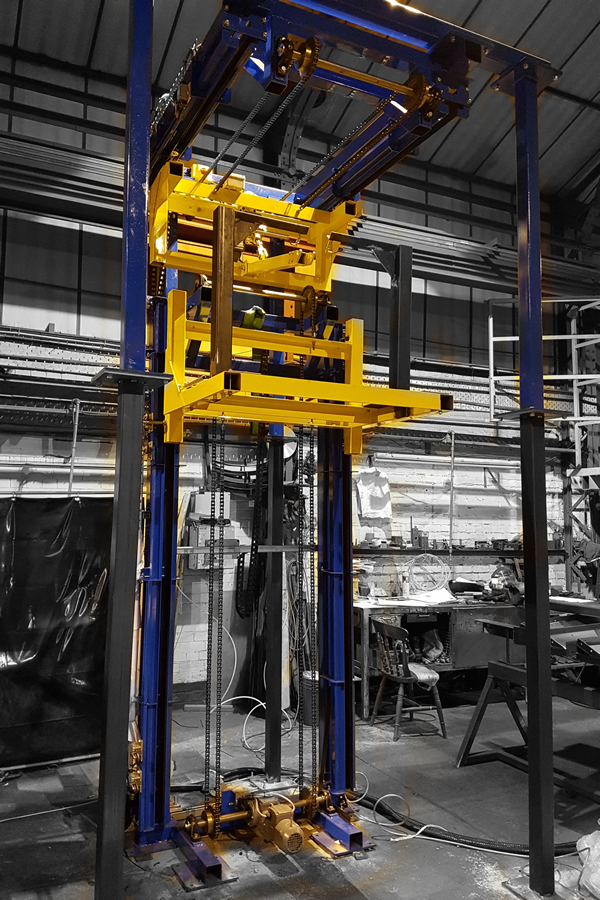Inexpensive Lift Repair Near Me: Expert Technicians at Your Solution
Inexpensive Lift Repair Near Me: Expert Technicians at Your Solution
Blog Article
Delving Into the Globe of Elevators: Typical Problems Faced by Numerous Lift Systems
As we navigate with the upright transport systems of modern-day buildings, elevators stand out as a vital element of our daily lives. From hydraulic lifts to grip systems and machine-room-less styles, each lift kind comes with its set of usual issues.
Hydraulic Lifts
Hydraulic lifts, typically preferred for low-rise structures, utilize fluid pressure to manage the activity of the elevator cars and truck (lift repair companies). This mechanism involves a hydraulic pump pushing oil right into a cyndrical tube, triggering the elevator to relocate the wanted instructions. While hydraulic elevators are recognized for their smooth and quiet procedure, they do come with their own set of typical concerns
One prevalent problem with hydraulic elevators is oil leakage. Additionally, issues with the control system, such as faulty valves or a malfunctioning pump, can cause disruptions in the elevator's movement.
Normal maintenance and timely fixings are important to ensure the smooth functioning of hydraulic lifts. By resolving these usual problems proactively, structure owners can reduce downtime and guarantee the safety and efficiency of their upright transport system.
Grip Elevators
When considering vertical transportation systems in structures, an additional common type in addition to hydraulic lifts is the traction elevator. Grip elevators operate making use of a system of ropes and counterweights that move the elevator vehicle by grasping onto the hoist ropes. This system allows for smoother and faster vertical transportation contrasted to hydraulic systems.
Among the common issues faced by traction lifts is rope wear. The continuous motion of the ropes within the traction system can lead to deterioration gradually, potentially creating the lift to malfunction or end up being harmful for usage. Regular examinations and upkeep of the ropes are important to guarantee the elevator's correct functioning and safety and security.
One more issue that grip elevators might run into is connected to the control system. Troubles with the control system can result in concerns such as irregular motion, hold-ups in action times, or perhaps total closures. Regular screening and maintenance of the control system are critical to stop such issues and ensure the elevator's integrity.
Machine-Room-Less (MRL) Lifts

One of the essential elements of MRL elevators is the compact gearless traction machine that is set up within the hoistway. This equipment efficiently drives the lift cars and we maintain lifts truck without the need for cumbersome devices discovered in traditional traction elevators. Additionally, MRL elevators generally utilize a counterweight system to stabilize the auto, more boosting their energy effectiveness.
In spite of their benefits, MRL elevators might encounter challenges related to upkeep and repair work as a result of the confined room for tools installment. Access for servicing components within the shaft can be limited, calling for specialized training for professionals. Appropriate maintenance routines and normal examinations are important to guarantee the ongoing smooth procedure of MRL elevators.
Overloading and Weight Restriction Issues
Are lifts equipped to handle excess weight tons successfully and securely? Straining and weight restriction concerns are vital concerns in elevator procedures. Elevator makers style raises with particular weight capabilities to make certain passenger safety and equipment long life. Exceeding these weight limitations can result in different problems, consisting of mechanical failures, delays, and safety dangers.
When elevators are overloaded, it puts extreme strain on the electric motor, cable televisions, and other components, potentially creating malfunctions or break downs. If they find we maintain lifts excess weight, security mechanisms such as sensing units and overload sensors are in place to protect against lifts from moving. Additionally, going beyond weight restrictions can result in boosted power usage and damage on the elevator system.
To mitigate straining issues, building managers need to plainly display weight limitations in lifts and inform residents on the relevance of adhering to these restrictions - lift repair companies. Regular maintenance checks by certified specialists can also help make certain that elevators are operating within secure weight specifications. By dealing with overloading and weight restriction issues proactively, building owners can boost elevator safety and security and efficiency
Electric System Failings
Going beyond weight restrictions in elevators can not only lead to mechanical concerns yet additionally potentially contribute to electric system failings within the lift infrastructure. Electric system failings are a vital problem in elevator operation, as they can trigger unexpected shutdowns, breakdowns, or even safety and security hazards.
Moreover, power surges or changes in the electric supply can also disrupt the lift's procedure, influencing its performance and safety and security. These electrical disruptions can damage delicate elevator elements such as control panels, circuit card, or sensing units, causing system failings. Normal upkeep and examinations are essential to determine and attend to possible electrical concerns without delay, guaranteeing the effective and secure operation of lift systems. By sticking lift repair near me to weight limitations and performing routine electrical system checks, structure owners can reduce the risk of electrical failures in lifts.
Final Thought

Hydraulic lifts, typically chosen for low-rise structures, make use of fluid stress to control the movement of the lift vehicle.When thinking about vertical transportation systems in buildings, another typical kind aside from hydraulic lifts is the traction lift. Traction lifts operate making use of a system of ropes and weights that relocate the elevator car by gripping onto the hoist ropes. Unlike typical elevators that need a different equipment space to house the devices, MRL lifts integrate most of the components within the shaft, eliminating the demand for a dedicated machine space.In conclusion, elevators encounter typical issues such as hydraulic malfunctions, traction system failings, and electric system troubles.
Report this page